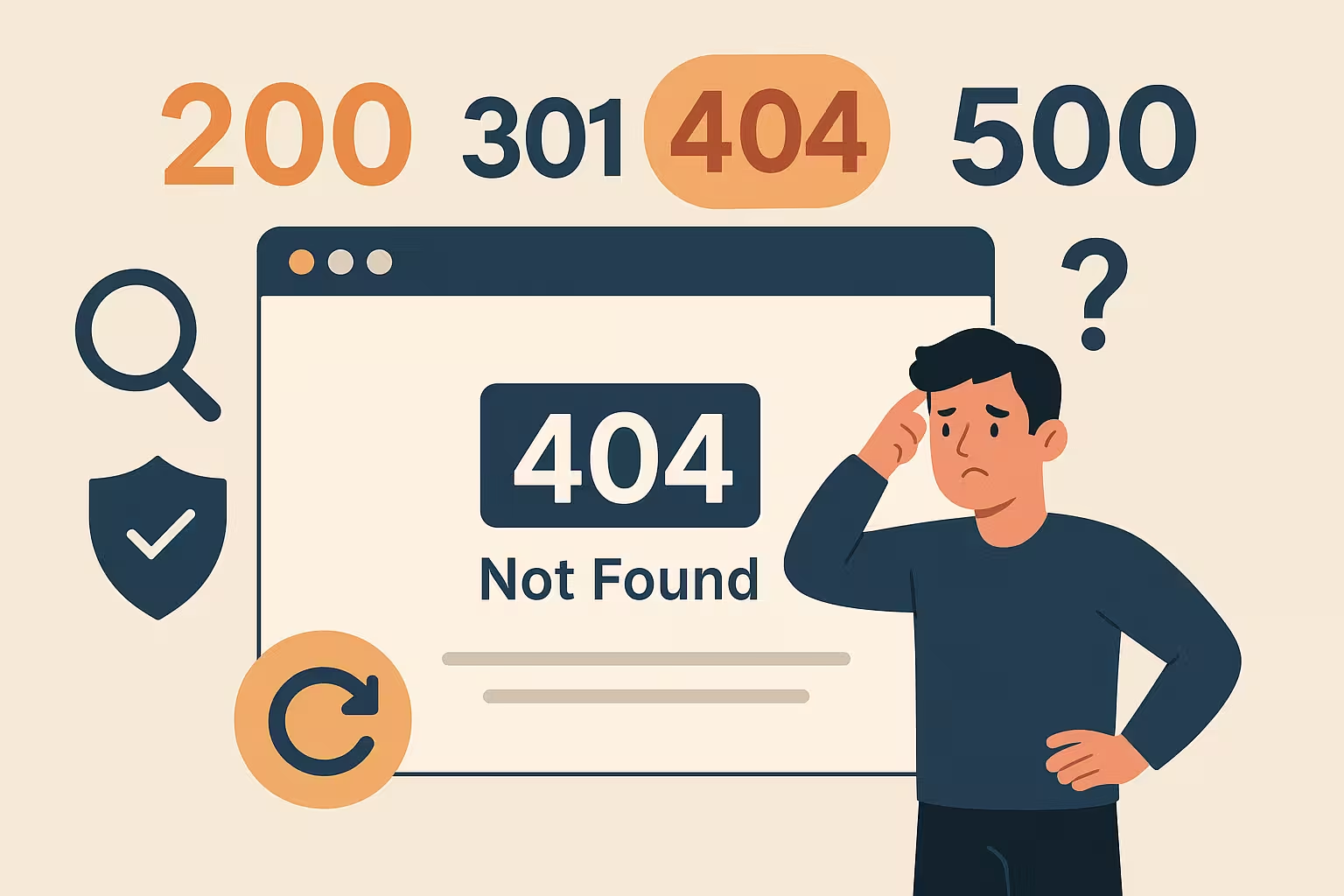Website Status Codes Explained
What Do Codes Like 404 Actually Mean? A Simple Guide to Website Status Codes
You click a link, and instead of a beautiful website, you see a plain white screen that says:
“404 Not Found.”
Annoying? Yes. Confusing? Definitely—if you’re not sure what it means.
But that little number is part of a larger system that helps browsers, servers, and users communicate. They’re called HTTP status codes, and while you don’t need to know them all, understanding a few of the common ones can save you frustration—and even help you troubleshoot your own site.
Let’s break it down, simply and clearly.
What Is an HTTP Status Code?
Whenever your browser (like Chrome, Safari, or Firefox) requests a webpage, the server that hosts that site responds with a status code. This code tells your browser whether things went well, or if something broke along the way.
Think of it like a restaurant:
These codes are usually three digits and grouped by their first number, which gives you a clue about the general outcome.
1xx: Informational (You’ll Rarely See These)
These are like the server saying, “Got your request—working on it!”
You almost never see these in the browser. They’re more for behind-the-scenes processes like live data streaming or connection setups.
Common 1xx Codes:
100 Continue — The server got the first part of the request and says, “Go ahead.”
2xx: Success! Everything Worked
These are the best codes. When you load a website and everything works perfectly, the server is usually sending a 200 OK behind the scenes.
Common 2xx Codes:
200 OK — Everything is working normally.
201 Created — Something new was successfully created (like submitting a form or uploading content).
You don’t usually see these—they’re working quietly in the background while you browse.
3xx: Redirects (This Page Moved)
These codes mean the page or content you’re trying to reach has been moved to another location. They help reroute traffic, often without you even noticing.
Common 3xx Codes:
301 Moved Permanently — The page has moved to a new address for good.
302 Found or Temporary Redirect — The page is temporarily somewhere else.
307 Temporary Redirect — Similar to 302, but stricter about how it’s handled.
308 Permanent Redirect — Like 301, but preserves how the request was made.
You typically see redirects when:
4xx: Client Errors (Usually Your Browser’s Side)
These are the most common errors you’ll see—and yes, this is where the infamous 404 lives. 4xx codes mean something is wrong with the request. In plain English:
The server is saying, “I can’t help you with what you’re asking for.”
Most Common 4xx Codes:
400 Bad Request — Your browser sent a request the server couldn’t understand. Usually caused by bad form data or a corrupted link.
401 Unauthorized — You’re trying to access something that requires a login, and you haven’t provided credentials—or they’re incorrect.
403 Forbidden — You’re logged in (or not), but you’re not allowed to see this content. It’s restricted.
404 Not Found — The page or resource you’re looking for doesn’t exist—either because it was deleted, moved, or the URL is wrong.
410 Gone — Similar to a 404, but more final. This page used to exist, but it was intentionally removed and isn’t coming back.
5xx: Server Errors (It’s Not You, It’s Them)
These codes mean the server is having a problem, not your browser. Think of it as the kitchen having a fire—they can’t make your food, no matter how perfect your order was.
Common 5xx Codes:
500 Internal Server Error — The server ran into a problem and doesn’t know how to handle it. It’s a catch-all for “something broke.”
502 Bad Gateway — Your request had to pass through another server (like a load balancer or firewall), and that server gave back a bad response.
503 Service Unavailable — The server is overwhelmed or undergoing maintenance. Try again later.
504 Gateway Timeout — The upstream server took too long to respond. It timed out.
What Can You Do When You See These Codes?
If you’re a visitor:
If you own or manage a site:
Bonus Tip: Status Codes and SEO
Search engines pay close attention to status codes. Here’s how:
A clean site with proper redirects and minimal errors makes a big difference in your visibility and reputation.
Why Should You Care?
Even if you’re not technical, knowing what these codes mean:
These little three-digit codes can unlock big insights into your site’s health.



